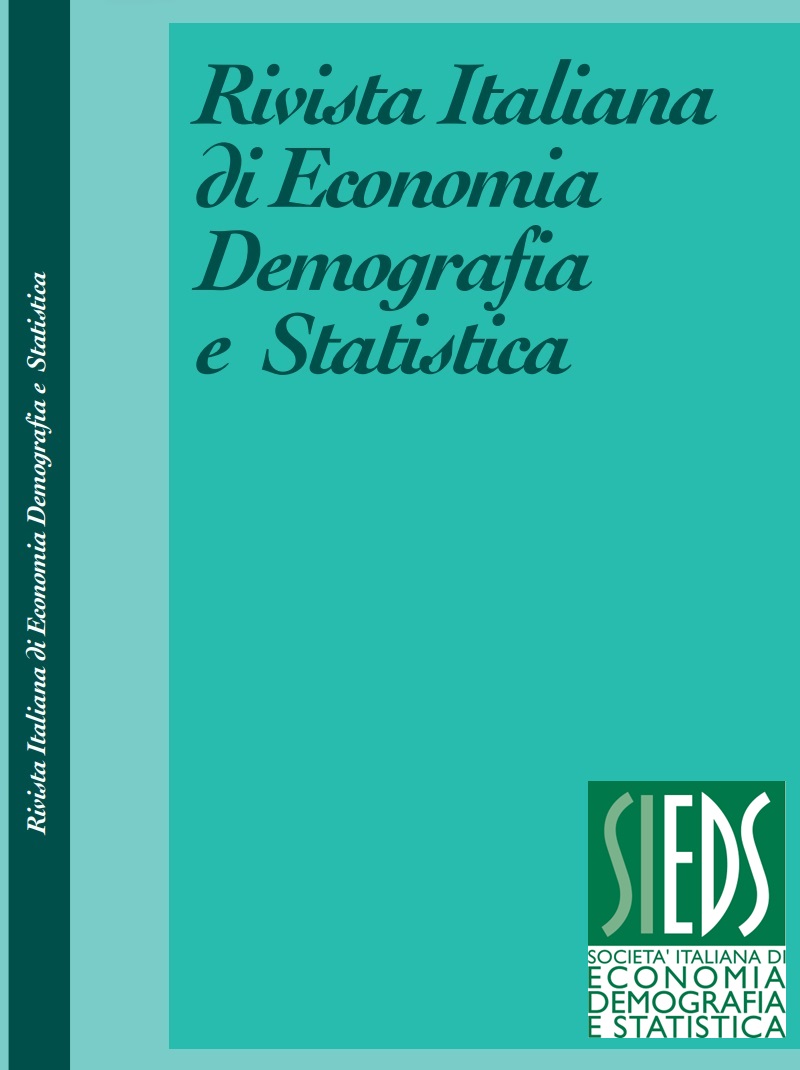A measure of the potential pollutant load of urban wastewater
DOI:
https://doi.org/10.71014/sieds.v79i4.368Abstract
Water resource management is a crucial process for ensuring sustainable development and the achievement of the goals set by the 2030 Agenda. Preserving the integrity of ecosystems dependent on the water cycle over time is essential for achieving and maintaining collective, economic, and social well-being. As part of this context, this work aims to quantify the potential pollutant load of urban wastewater, generated at the municipal level and analyzing its distribution in the national territory. The tool adopted to achieve this goal is the estimation of Total Urban Equivalent Inhabitants (TUEI), a quantity that takes into account not only the resident population but also other categories of individuals contributing to the production of biodegradable pollutant loads, such as the tourism sector, commuter flows, industrial activities, accommodation, and catering establishments. The main contribution of the analysis is therefore to define the need for urban wastewater treatment from various pollution-generating sources, meeting the current needs of the Regions and the Ministry of Environment and Energy Security responding to European Urban Waste Water Treatment Directive. The estimation was produced for the year 2021, integrating information from multiple sources. Furthermore, different levels of territorial aggregation were considered. In particular, estimates in the domains of interest (municipal, provincial, regional) are obtained from data related to census sections. With this methodology, attempts were made to introduce elements useful for measuring TUEI and improving the assessment of pollutant loads, a complex topic that still presents critical elements in the availability and usability of sources and deserves further investigation.
References
BARBIERO G. 2003. Il metodo dei coefficienti "zonali" per la valutazione del carico inquinante potenziale industriale nelle diverse aggregazioni territoriali. Roma: CNR Istituto di Ricerca sulle Acque IRSA.
CONSIGLIO DELLE COMUNITA’ EUROPEE. Direttiva 91/271/CEE del Consiglio, del 21 maggio 1991, concernente il trattamento delle acque reflue urbane. Bruxelles. Gazzetta Ufficiale delle Comunità Europee, N. L 135/40 del 30/05/1991.
EUROPEAN ENVIRONMENT AGENCY. 2019. Urban wastewater treatment for 21st century challenges. https://www.eea.europa.eu/publications/urban-waste-water-treatmentfor/urban-waste-water-treatment
HALLEUX V. 2023. Urban wastewater treatment. Updating EU rules. European Parliamentary Research Service.
ISTITUTO NAZIONALE DI STATISTICA. 2009. Stima del carico inquinante delle acque reflue in termini di abitanti equivalenti - Nota metodologica.
ISTITUTO NAZIONALE DI STATISTICA. 2011. Matrici di pendolarismo – Tavole di dati. Matrice origine-destinazione degli spostamenti per motivi di lavoro o di studio rilevata al 15° Censimento generale della popolazione (data di riferimento: 9 ottobre 2011). https://www.istat.it/non-categorizzato/matrici-di-contiguita-distanza-e-pendolarismo/
ISTITUTO NAZIONALE DI STATISTICA. 2021. Capacità degli esercizi ricettivi. https://www.istat.it/scheda-qualita/capacita-degli-esercizi-ricettivi-2/
ISTITUTO NAZIONALE DI STATISTICA. 2022. Classificazione dei Comuni in base alla densità turistica come indicato dalla Legge 17 luglio 2020, n. 77, art. 182- Nota metodologica e tavole di dati. https://www.istat.it/classificazione/classificazione-dei-comuni-in-base-alla-densita-turistica/
ISTITUTO NAZIONALE DI STATISTICA. 2023. Popolazione presente in "Glossario Statistico" in https://www.istat.it/classificazioni-e-strumenti/glossario/
RAMBERTI S., BALDONI T., TERSIGNI S. 2022. Censimento delle acque per uso civile 2020 – Tavole di dati. Istat 29 dicembre 2022. https://www.istat.it/tavole-di-dati/censimento-delle-acque-per-uso-civile-anno-2020/#:~:text=Il%20volume%20di%20acqua%20prelevato,modesta%20(%2D0%2C4%25).
UNESCO. 2024. The United Nations World Water Development Report 2024: water for prosperity and peace. Paris. https://unesdoc.unesco.org/ark:/48223/pf0000388948
Downloads
Published
Issue
Section
License
Copyright (c) 2025 Stefano Tersigni, Valerio Adolini, Francesco Isidori

This work is licensed under a Creative Commons Attribution 4.0 International License.



